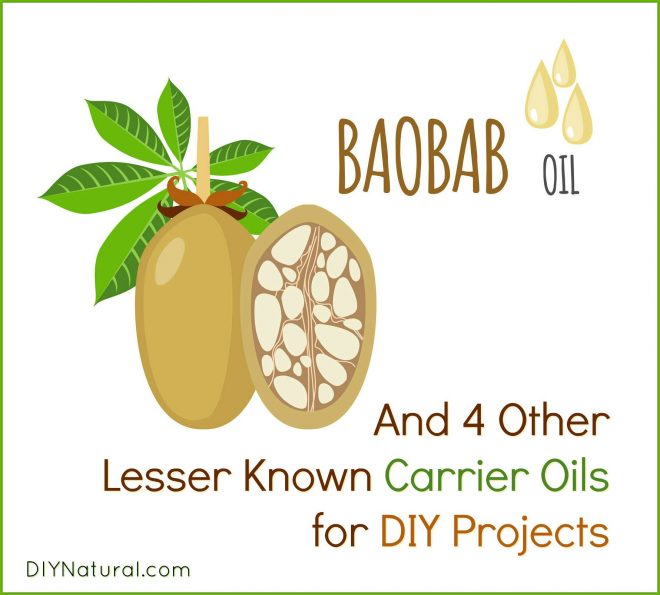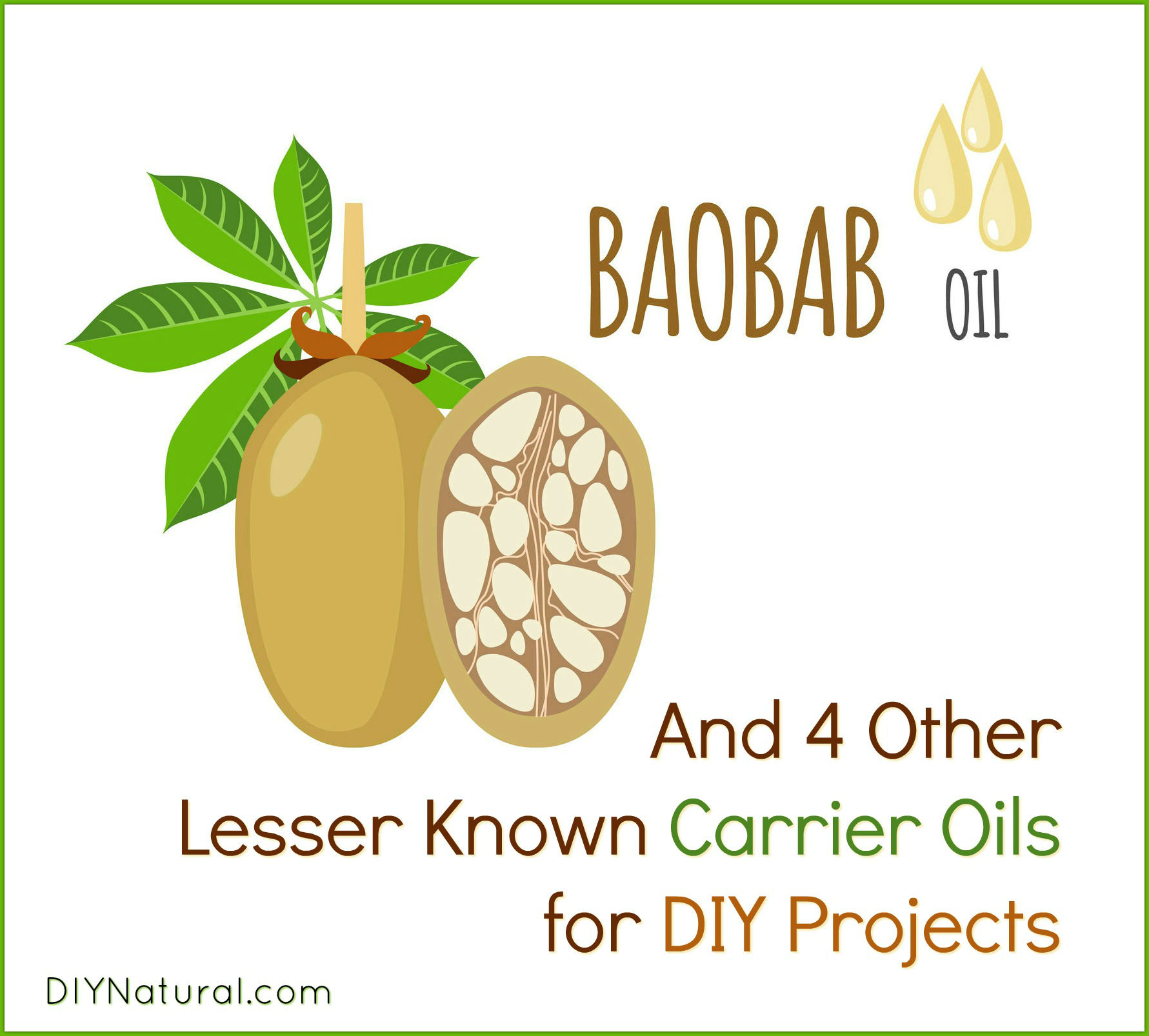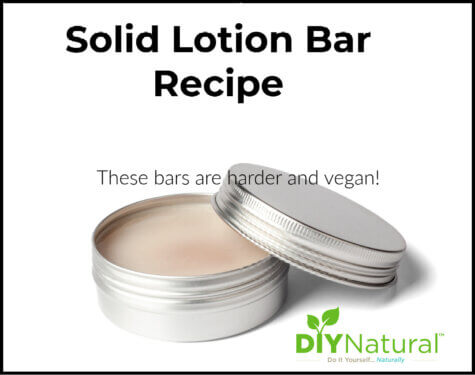
Carrier oils are often the unsung heroes of DIY recipes.
Recently I’ve noticed that people really focus on the healing properties of essential oils and tend to downplay the role of carrier oils in DIY products like salves, body butters, creams, soaps, and lotions.
While essential oils are wonderful, carrier oils often make up the bulk of these recipes. Selecting the proper carrier oil can often be key to the success of a DIY preparation. There are many carrier oils that can be helpful in certain situations but detrimental in others. Some carrier oils work best with certain skin types or conditions, while other carrier oils can be drying or ill-suited for certain persons.
Five Carrier Oils You Should Be Using In DIY Projects
Below are five of my favorite little known carrier oils. These oils are excellent sources of moisture and nutrients. While they might be pricier than coconut oil, they are definitely worth a try!
Make sure to purchase oils from a reputable source that carries high quality, unrefined carrier oils. You will be amazed at the wonderful things they can do for your skin! (DIY Natural uses and recommends this source for high quality carrier oils.)
1. Baobab oil
This oil absorbs quickly and has a slightly less greasy feel that some other carrier oils. Baobab oil is rich in fatty acids and vitamins A, D, E, as well as some antioxidants. It is golden yellow with a very subtle nutty aroma. Baobab oil has a percentage of saturated fatty acids which makes it a good oil to use to extend the life of some blends. It is a slightly thicker oil, which gives it a nice body and fullness. (Find organic baobab oil here.)
Shelf life: Approximately 2 years if stored in a cool, dry, dark environment.
Uses: Inflamed skin, sunburns, irritated skin, as a hair moisturizer, as a carrier oil for massage blends, with essential oils in roller blends, in DIY creams or balms.
2. Babassu oil
Rich in lauric and myristic acids as well as other saturated fatty acids. Babassu oil is solid at room temperature. It is a great oil to substitute for coconut oil in most DIY projects. It also melts upon contact with skin (76°F) just like coconut oil. (Find organic babassu oil here.)
Shelf life: Approximately 2 years if stored in a cool, dry, dark environment. It can be refrigerated after opened to preserve shelf life.
Uses: Adds a fluffy lather to soaps, works well in creams and butters, penetrates skin well, and is a good overall moisturizer.
3. Borage Seed Oil
This oil is very well known as one of the richest sources of gamma linolenic acid (GLA). These acids are wonderful for irritated skin, dry skin, and several other skin conditions. I’ve heard that it shouldn’t be heated, but I am not completely sure that is the case with this oil. It is quite expensive, so blending it with other oils is a good idea if you are trying to be cost-effective. (Find organic borage seed oil here.)
Shelf life: About 2 years, though this oil needs to be stored in a dark environment and in the refrigerator once opened.
Uses: Psoriasis, eczema, dry skin, redness, facial oils/creams, massage oil blends, and other non-heated preparations.
4. Sea Buckthorn oil – scarring
It’s important to note that there are two different types of sea buckthorn oils – one made from the fruit of the plant and another made from the seeds of the plant. There are also some companies that sell the oil as extracted from the fruit AND the seed. There is also sea buckthorn CO2 extract (as opposed to the cold pressed method used in the first oils I mentioned). Each of these individual oils has it’s own properties and best uses, so I’ll try to be as general as I can in regards to usage.
Overall sea buckthorn oil is rich in tocopherols (Vitamin E), unsaturated fatty acids and essential amino acids, along with beta-carotene which gives it a lovely reddish-orange hue. This hue can lightly stain the face (and linens) if used at high concentrations. However, because the oil is expensive, using it at a lower percentage (10%) in oil blends and/or butters, creams, or salves is a good idea. (Find organic sea buckthorn oil here.)
Shelf life: 2 years with proper storage in a cool, dark environment.
Uses: Scars, inflamed skin, sunburns, to aid wounds in healing, as an antioxidant, in facial blends, and in most general skin-healing blends.
5. Tamanu Oil
Tamanu Oil is likely one of my favorite oils to use. It’s packed with fatty acids, especially oleic acid. This makes it ideal for helping skin to heal itself. It also contains calophyllic acid – a fatty acid unique to tamanu. This versatile oil has been used with many ailments and can be added to lots of DIYs. Tamanu penetrates skin easily and is generally non-irritating. I like to use this cream in a salve for cracked and dry winter skin. Works like a charm every time! (Find organic tamanu oil here.)
Shelf life: About 2 years (or slightly less). Store in a cool, dry, dark environment.
Uses: Eczema, psoriasis, dry skin, inflamed skin, burns, wounds, and many skin conditions!
What’s your favorite carrier oil to use in DIY products? Share with us!
*******




I have hives very bad. I am not sure if it is something I eat or maybe my stress level.
Can you recommend a good oil I could use to stop the itching and burning?
I love your articles, Katie!
Thanks so much Patti! I’m sorry to hear about your hives – that sounds very uncomfortable! I think oils might not help with something like this – generally there is a reason/cause as to why hives are appearing. I’d check with your doctor before trying something that could irritate them further. Good luck!
Kate, my husband has eczema patches on lower legs, maybe irritated by varicous veins?? Nothing seems to work naturally and I don’t believe in chemical creams from the dr! Which of these oils would you recommend using just by themselves? I appreciate any info!! Thank you!
Joan,
My daughter had the same issues with eczema and varicose veins in her lower legs. While I cannot say she is cured; since giving up gluten and staying away from high histamine foods, she has not had any eczema outbreaks, and very little itching from her legs.
Hi Joan! I definitely agree with Dian – sometimes eczema can be caused by internal factors such as: intolerances, gut health, water intake, etc. I’m no doctor, but you might want to look into some of those things.
For the meantime, I think Borage, Tamanu, or Evening Primrose oils would be good to try.
Good article Katie! Thanks!
Absolutely Josie!
Every time I shower, I use oil on my skin. This began a year ago when I was reading about some of the carrier oils and their properties. I started using just baobab oil starting with my feet and being especially careful to put a generous amount on the heels. If I hadn’t had three surgeries on those feet, they would be pretty. Lately, as baobab is pricey, I have been using a blend of baobab and grape seed oil. I should have been doing this years ago. My skin is the softest and smoothest, it’s ever been.
Great idea Linda!! I also blend some of my pricier oils to make them last longer and they still work just as well.